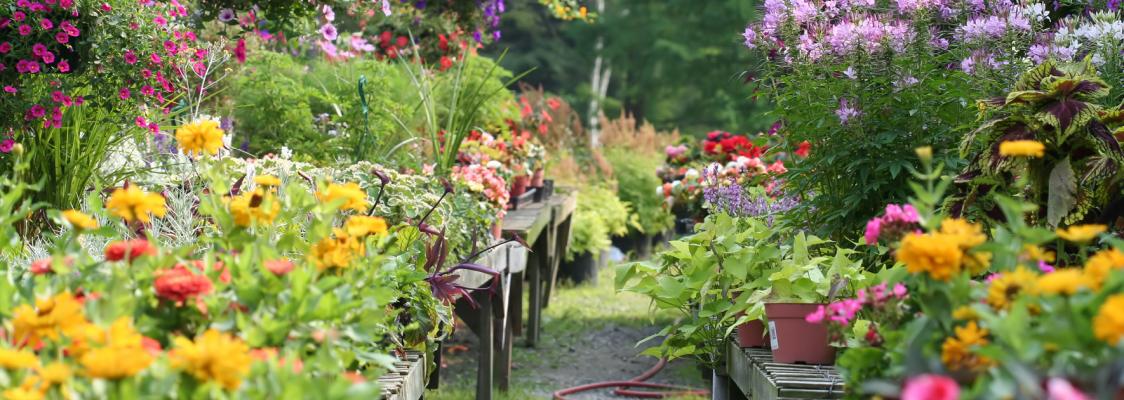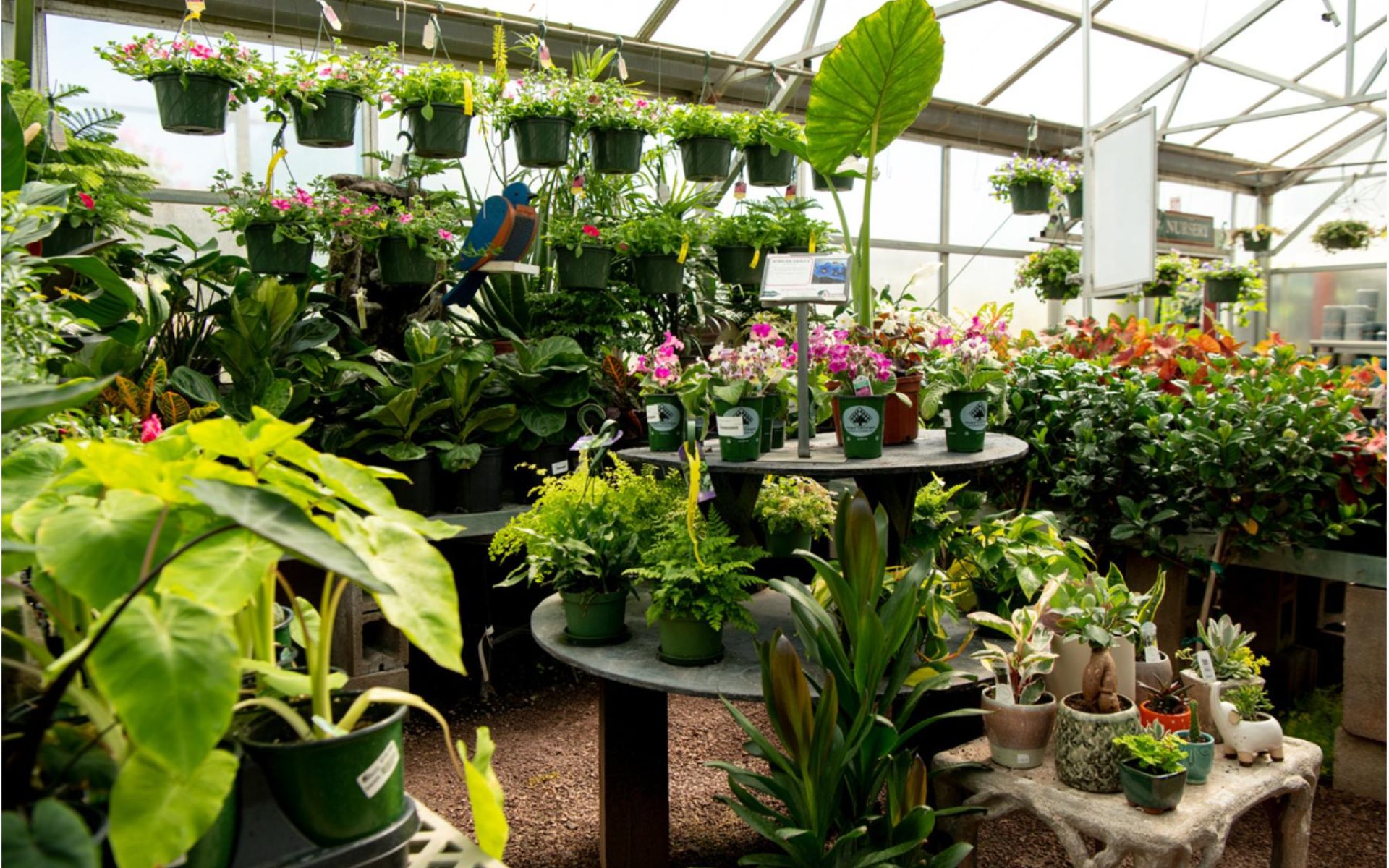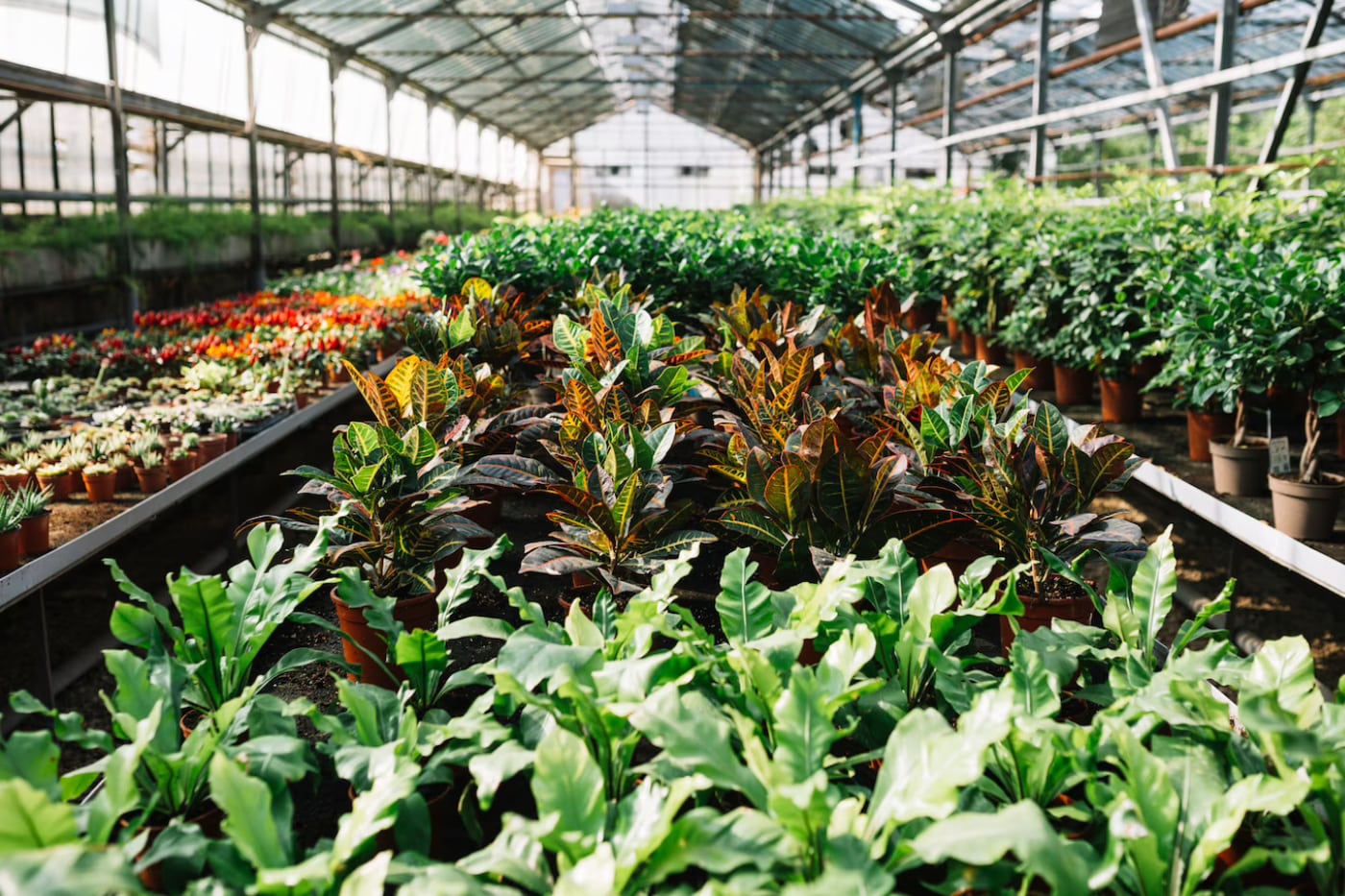As an Amazon Associate, I earn from qualifying purchases.
After buying outdoor plants from a nursery, inspect them for pests and acclimate them to their new environment. Water them thoroughly and choose a suitable planting spot.
Gardening enthusiasts often find joy in bringing home new outdoor plants from a nursery. Proper care right after purchase is crucial for their survival and growth. Inspect your plants carefully for any signs of pests or diseases. Acclimating them to their new environment ensures they adjust well to the conditions.
Watering them thoroughly helps reduce transplant shock. Selecting the right spot in your garden, considering sunlight and soil type, can significantly boost their health. With the right initial steps, your new plants will thrive and enhance your garden’s beauty.
Inspecting Your New Plants
Bringing home new outdoor plants is exciting. But, you must inspect them first. Proper inspection ensures they thrive in your garden. This helps avoid problems later.
Check For Pests
Look closely at your new plants. Check the leaves, stems, and soil. Use a magnifying glass if needed.
- Inspect both sides of the leaves.
- Look for tiny insects or eggs.
- Check the soil for pests like ants or worms.
If you find pests, act quickly. Remove them by hand or use a gentle spray. This prevents infestations in your garden.
Assess Plant Health
Healthy plants grow better. Ensure your plants are in good condition.
| Aspect | What to Look For |
|---|---|
| Leaves | Green and vibrant, no spots or holes |
| Stems | Firm, not wilted or broken |
| Roots | White and strong, not mushy or dark |
If the plant looks weak, give it extra care. Water it well and place it in a good spot.

Credit: xerces.org
Acclimating To New Environment
Buying outdoor plants from a nursery is exciting. Your new plants need care to thrive. The first step is acclimating to their new environment. This process helps plants adjust to changes in light, temperature, and humidity. Let’s dive into the steps for successful acclimation.
Hardening Off Process
The hardening off process is crucial. It helps plants adjust gradually. Start by placing them outside for a few hours each day. Increase the time outside over a week. This method strengthens the plants.
Use a table to track the hardening off schedule:
| Day | Time Outside |
|---|---|
| 1 | 2 hours |
| 2 | 3 hours |
| 3 | 4 hours |
| 4 | 5 hours |
| 5 | 6 hours |
| 6 | 7 hours |
| 7 | 8 hours |
Gradual Sun Exposure
Plants need gradual sun exposure to avoid shock. Direct sun can burn them. Start with a shaded spot. Move them to partial sun over a week. Finally, place them in full sun as needed.
Follow these steps for gradual sun exposure:
- Day 1-2: Place in full shade
- Day 3-4: Move to partial shade
- Day 5-6: Increase to partial sun
- Day 7: Transition to full sun
By following these steps, your plants will thrive. They will grow strong and healthy in their new home.
Choosing The Right Location
After bringing home your new outdoor plants from the nursery, the next crucial step is choosing the right location. This decision will affect your plants’ health and growth. To ensure your plants thrive, consider their sunlight requirements and soil conditions. These factors are vital for your plants’ well-being.
Sunlight Requirements
Each plant has different sunlight needs. Some plants need full sun, while others thrive in partial shade. Check the plant tags or ask the nursery staff for the specific sunlight requirements of your plants.
- Full Sun: These plants need at least 6 hours of direct sunlight daily.
- Partial Shade: These plants prefer 3-6 hours of direct sunlight or filtered light throughout the day.
- Full Shade: These plants thrive with less than 3 hours of direct sunlight, often in dappled or indirect light.
Observe your garden to understand the light patterns throughout the day. This helps you place each plant in its ideal spot.
Soil Conditions
Soil quality impacts plant health significantly. Ensure your garden soil is well-draining and rich in nutrients.
| Soil Type | Description |
|---|---|
| Sandy Soil | Drains quickly, often dry, light and easy to work. |
| Clay Soil | Heavy, retains water, can be hard to dig. |
| Loamy Soil | Well-balanced, good drainage, retains moisture and nutrients well. |
Add compost or organic matter to improve soil quality. This enhances drainage and nutrient content.
Test your soil’s pH level. Most plants thrive in slightly acidic to neutral soil (pH 6.0-7.0). Adjust the pH as needed using soil amendments.
Understanding your plants’ needs and your garden’s conditions ensures a thriving, beautiful outdoor space.
Planting Preparation
After buying outdoor plants from a nursery, the next step is crucial. Proper planting preparation ensures your plants thrive. This section guides you through essential steps.
Soil Preparation
Healthy soil is the foundation for strong plants. Start by clearing the area of weeds and debris. Aerate the soil using a garden fork or tiller. This helps roots grow easily.
Test your soil’s pH level. Most plants prefer slightly acidic to neutral soil. You can buy a soil test kit from a garden center. Based on the results, amend the soil. Add lime to raise pH, or sulfur to lower it.
Incorporate organic matter into the soil. Compost or aged manure works well. This improves soil structure and provides nutrients. Mix it in thoroughly to a depth of about 12 inches.
Digging The Hole
Digging the right-sized hole is important. The hole should be twice as wide as the plant’s root ball. This gives roots space to spread. The depth should match the root ball’s height.
Use a shovel to dig the hole. Place the soil on a tarp for easy backfilling. Check the hole’s depth by placing the plant inside. The top of the root ball should be level with the ground.
If the soil is heavy clay, consider amending it. Mix the excavated soil with compost. This improves drainage and root growth. Place the plant in the hole, then backfill with the amended soil.
Planting Techniques
After buying outdoor plants from a nursery, knowing the right planting techniques is crucial. Proper techniques ensure your plants thrive in their new environment. This section covers the correct depth and spacing between plants to help you succeed.
Correct Depth
Planting at the correct depth is vital. It helps roots establish well. To find the right depth, use the nursery pot as a guide.
- Dig a hole twice as wide as the pot.
- Ensure the hole’s depth matches the pot’s height.
- Place the plant in the hole, ensuring the top of the root ball is level with the ground.
- Fill the hole with soil, pressing it gently around the roots.
Water the plant thoroughly after planting. This helps settle the soil. It also eliminates air pockets around the roots.
Spacing Between Plants
Proper spacing ensures each plant gets enough sunlight, air, and nutrients. Crowded plants compete for resources and may not grow well.
Here’s a quick guide to plant spacing:
| Plant Type | Spacing |
|---|---|
| Small Flowers | 6-12 inches |
| Shrubs | 3-5 feet |
| Trees | 10-20 feet |
Use these guidelines to plan your garden layout. Proper spacing promotes healthy growth and reduces the risk of disease.
Follow these planting techniques to ensure your outdoor plants thrive. Happy gardening!
Watering Guidelines
After purchasing new outdoor plants from the nursery, correct watering is essential. Proper watering ensures your plants thrive and stay healthy. Below are some guidelines to help you.
Initial Watering
Upon bringing your plants home, water them immediately. This helps them recover from the stress of transport. Use a gentle stream of water. Ensure the water reaches the roots. The soil should be moist but not waterlogged. If the soil is too dry, water more slowly. This allows the soil to absorb the water effectively.
Ongoing Watering Schedule
Establishing a regular watering schedule is crucial. Follow these steps:
- Check soil moisture daily. Insert your finger into the soil.
- If the soil feels dry, it’s time to water.
- Water early in the morning. This reduces evaporation.
- Avoid watering in the evening to prevent fungal growth.
Different plants have different needs. Below is a table for general guidelines:
| Plant Type | Watering Frequency | Notes |
|---|---|---|
| Succulents | Every 7-10 days | Allow soil to dry out completely. |
| Flowering Plants | Every 2-3 days | Keep soil consistently moist. |
| Vegetables | Daily | Water deeply and evenly. |
Monitor your plants for signs of overwatering or underwatering. Yellow leaves indicate overwatering. Wilting suggests underwatering. Adjust your schedule accordingly.
Using mulch can help retain soil moisture. Apply a 2-inch layer around the plants. This also helps prevent weeds.
Fertilizing Your Plants
After purchasing outdoor plants from the nursery, fertilizing them is crucial. Proper fertilization helps your plants grow strong and healthy. This section covers everything you need to know about fertilizing your plants.
Choosing Fertilizer
Choosing the right fertilizer is essential. Use a balanced fertilizer with equal parts nitrogen, phosphorus, and potassium. Here’s a quick guide:
| Type | Purpose |
|---|---|
| Organic | Improves soil health |
| Synthetic | Provides quick nutrients |
| Slow-Release | Offers nutrients over time |
Read the labels carefully. Ensure the fertilizer matches your plant type. For flowering plants, use a fertilizer high in phosphorus. For leafy plants, choose one high in nitrogen.
Application Methods
Applying fertilizer correctly ensures your plants get the nutrients. Here are some methods:
- Granular Fertilizer: Sprinkle it around the base. Water it well.
- Liquid Fertilizer: Mix it with water. Apply it directly to the soil.
- Foliar Feeding: Spray it on the leaves. Best for quick nutrient absorption.
Follow the instructions on the fertilizer package. Over-fertilizing can harm your plants. Apply fertilizer every 4-6 weeks during the growing season. Always water your plants after fertilizing. This helps distribute the nutrients evenly.

Credit: bountifulacres.com
Mulching Benefits
After buying outdoor plants from a nursery, proper mulching is crucial. Mulching offers many benefits, such as moisture retention, weed control, and temperature regulation. This section delves into the benefits of mulching and provides tips for effective mulching.
Types Of Mulch
There are different types of mulch, each with unique benefits. Understanding these types helps in making the right choice for your garden.
- Organic Mulch: Includes wood chips, straw, grass clippings, and compost. It improves soil quality as it decomposes.
- Inorganic Mulch: Includes gravel, plastic sheets, and landscape fabrics. It lasts longer but doesn’t improve soil.
Proper Mulching Techniques
Applying mulch correctly ensures your plants get the most benefits. Follow these techniques for effective mulching.
- Clean the Area: Remove weeds and debris before mulching.
- Apply Evenly: Spread mulch evenly around plants, about 2-3 inches thick.
- Avoid the Stem: Keep mulch away from the plant stem to prevent rot.
- Water the Mulch: Water the mulch immediately after applying to help it settle.
Using these tips and techniques, your garden will thrive. Happy gardening!
Pest And Disease Management
After buying outdoor plants, managing pests and diseases is crucial. Proper care ensures your plants stay healthy and thrive. Let’s explore how to handle common pests and prevent diseases.
Common Pests
Outdoor plants can attract various pests. Here are some common ones:
- Aphids: Small, sap-sucking insects causing yellowing leaves.
- Spider mites: Tiny arachnids causing webbing and leaf discoloration.
- Whiteflies: Small, white insects that cause leaf wilting.
- Slugs and snails: Mollusks that chew holes in leaves.
To manage these pests, follow these steps:
- Inspect plants regularly for signs of pests.
- Use a strong stream of water to dislodge pests.
- Apply insecticidal soap or neem oil as needed.
- Introduce beneficial insects like ladybugs.
Disease Prevention
Preventing diseases is easier than treating them. Follow these tips:
- Watering: Water plants at the base to avoid wetting foliage.
- Spacing: Ensure proper spacing to promote air circulation.
- Soil health: Use well-draining soil to prevent root rot.
- Pruning: Remove dead or diseased plant parts promptly.
| Disease | Symptoms | Prevention |
|---|---|---|
| Powdery Mildew | White powdery spots on leaves | Ensure good air circulation and avoid overhead watering |
| Root Rot | Yellowing leaves and wilting | Use well-draining soil and avoid overwatering |
| Leaf Spot | Brown or black spots on leaves | Remove affected leaves and avoid wetting foliage |
Pruning And Maintenance
Once you bring your outdoor plants home from the nursery, proper care is essential. Pruning and maintenance will help your plants grow strong and healthy. This section covers the basics of pruning and routine maintenance to keep your garden flourishing.
Pruning Basics
Pruning helps plants grow better and look nice. Follow these steps:
- Use clean, sharp tools for cutting.
- Remove dead or yellow leaves first.
- Cut branches at a 45-degree angle.
- Trim back overgrown areas to shape the plant.
Pruning encourages new growth and helps prevent diseases. Be gentle with young plants. Too much pruning can harm them.
Routine Maintenance
Routine maintenance is key to healthy plants. Here are some tips:
- Watering: Water your plants regularly. Check soil moisture with your finger.
- Weeding: Remove weeds to avoid competition for nutrients.
- Fertilizing: Use balanced fertilizer every few weeks.
- Mulching: Add mulch to keep soil moist and cool.
- Pest Control: Check for pests and use natural remedies if needed.
Regular care keeps your plants happy and healthy. It also makes your garden look amazing. Below is a table summarizing the routine maintenance tasks:
| Task | Frequency | Notes |
|---|---|---|
| Watering | Every 2-3 days | Adjust based on weather |
| Weeding | Weekly | Remove by hand |
| Fertilizing | Every 4-6 weeks | Use balanced fertilizer |
| Mulching | Every season | 2-3 inches of mulch |
| Pest Control | As needed | Use natural remedies |
By following these tips, your outdoor plants will thrive. Happy gardening!

Credit: www.facebook.com
Frequently Asked Questions
How To Acclimate New Outdoor Plants?
Acclimate new plants by gradually introducing them to sunlight. Start with a few hours of morning sun. Increase exposure daily. This helps prevent shock and promotes healthy growth.
What To Do Before Planting Outdoor Plants?
Before planting, prepare the soil. Remove weeds, add compost, and ensure proper drainage. This creates a healthy environment for the new plants.
How Often To Water New Outdoor Plants?
Water new plants deeply and regularly. Check the soil moisture daily. Adjust watering frequency based on weather conditions and plant needs.
Should I Fertilize New Outdoor Plants?
Fertilize new plants sparingly. Use a balanced, slow-release fertilizer. Follow the manufacturer’s instructions. Over-fertilizing can harm plants.
Conclusion
Ensuring proper care for your new outdoor plants is crucial for their growth. Water them regularly and check for pests. Use high-quality soil and provide adequate sunlight. Follow these tips, and your garden will thrive. Happy gardening!

